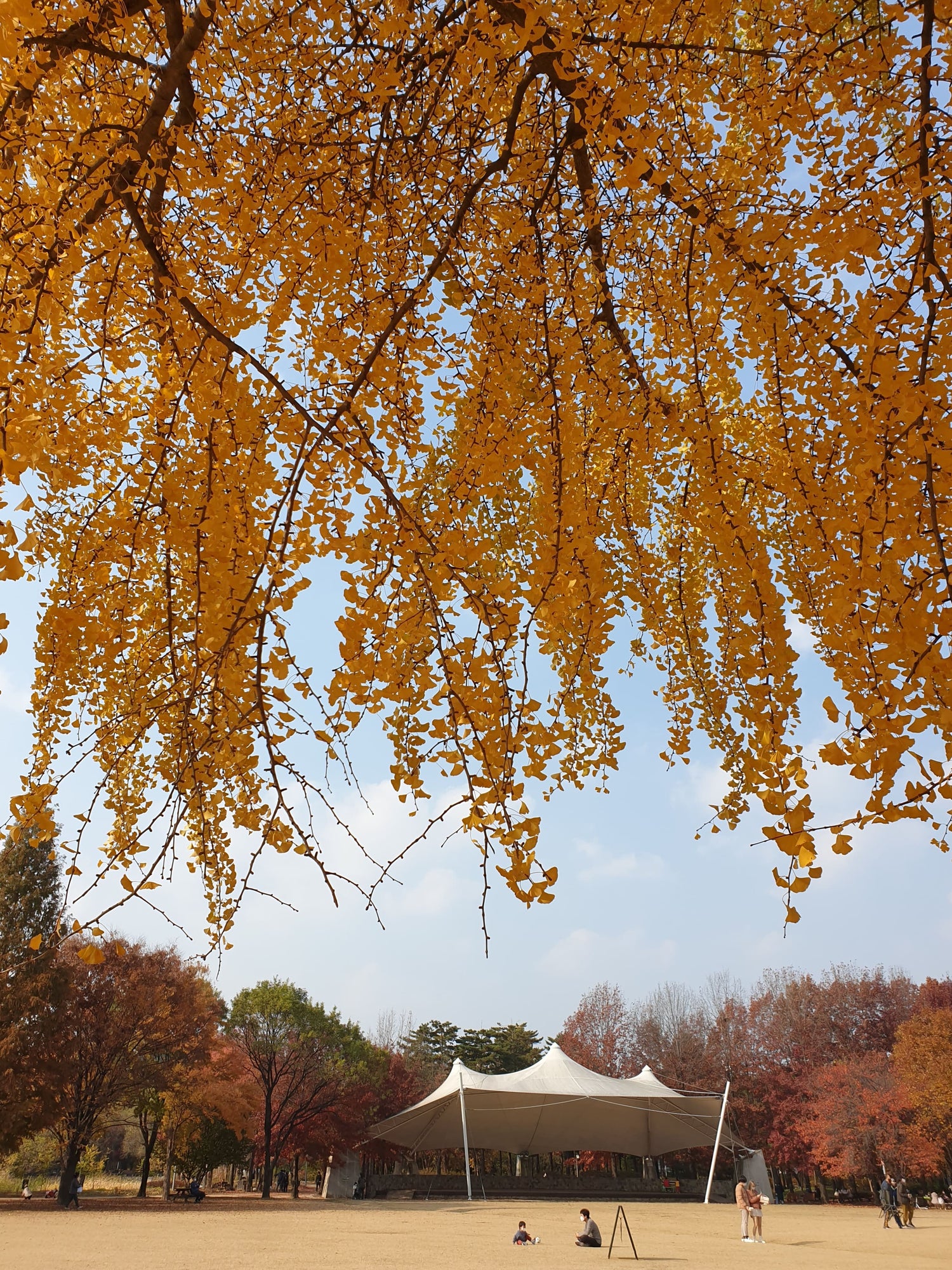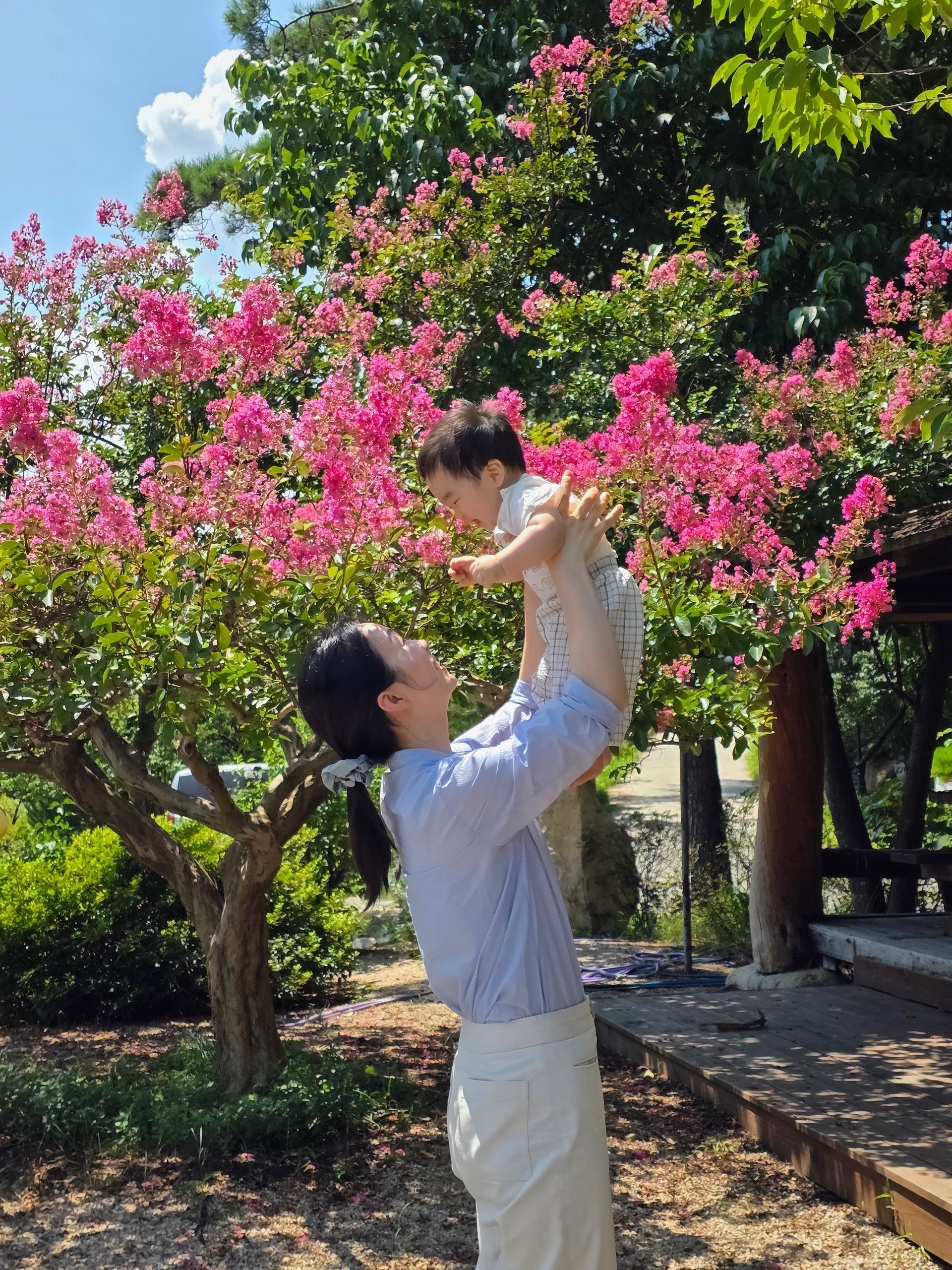Even though September has begun, we're still seeing sweltering heat and tropical nights with temperatures hovering around 33°C. When will the autumn we remember finally arrive?
The Changing Clock of Autumn

Korea has long been known as a country with four distinct seasons, but one of them, autumn, is arriving later and later. According to the Korea Meteorological Administration (KMA), the meteorological start of autumn is defined as the first day with an average daily temperature below 20°C that doesn't rise above that mark again. Recently, the average start date nationwide has shifted to September 17, which is more than two weeks later than in the past.
The future outlook is even more surprising. If warming trends continue at the current rate, the start of autumn will likely be pushed back even further, to October 1 in the 2040s and October 17 in the 2080s—about a month later than today. The current length of autumn is around 71 days, but after 2041, it could be reduced to just 66 days. And like last year, intense heat waves could become more frequent, causing autumn to disappear altogether.
The KMA predicts a high probability (up to 60% by late September) that temperatures will be higher than usual this year. For much of September, high-pressure systems are expected to bring warmer-than-average conditions, leading to more hot days.
How a Shorter Autumn Affects Our Lives

A later and shorter autumn isn't just a simple seasonal shift; it means losing the unique ecological and cultural functions that the season has historically served.
In the natural world, autumn has always been a transitional period for preparing for winter. It was a time for plants and animals to store energy for the cold months, and for plants, it was a biological preparation period where they would break down chlorophyll to store nutrients. For humans, it was the season of "harvest and storage," a cultural and economic turning point to reap the fruits of a year's labor and prepare for winter.
But as autumn shrinks, these natural processes are being compressed or skipped altogether. The clear, low-humidity weather that gave rise to the Korean saying, "the season when the sky is high and horses grow fat" is being replaced by erratic temperature swings and extreme weather.
Our daily lives are also becoming disrupted. The timing of traditional autumn festivals and events like enjoying the foliage and harvest celebrations is becoming misaligned. The concept of "seasonal autumn foods" is becoming blurred. The seasonal availability of autumn delicacies like apples, pumpkins, oysters, and jumbo shrimp is shifting, which is expected to cause major changes in our food culture.
Impacts of a Disappearing Autumn

Disrupted Fall Foliage and Plant Winter Preparation
The most direct victim of a shorter autumn is the process of a plant's winter preparation through fall foliage. Fall colors aren't just for a beautiful landscape; they are an essential survival strategy for trees to break down chlorophyll and move nutrients to their stems and roots for the winter. However, when temperatures drop too quickly, a "green leaf drop" phenomenon can occur, where trees lose their leaves abruptly without the proper color change. This means the trees can't store enough energy for the winter, leading to reduced resistance to pests and a lower tolerance for the cold.
Impact on Fisheries and Autumn Seafood
There's a well-known Korean proverb that says, "the aroma of grilled autumn herring fish is so enticing it makes even a runaway daughter-in-law return home." This saying beautifully captures the special place this fish holds in Korean food culture. However, with rising water temperatures and a shorter autumn due to climate change, the herring fish season is shifting earlier. The traditional peak season, from September to November, is now starting in August and getting shorter, raising concerns about declining catches and lower quality. This isn't just a problem for the fishing industry; it signifies a fundamental change in the seasonal food culture and lifestyle that has been part of Korean life for thousands of years. The very philosophy of "eating the seasons," a core tenet of Korean food culture, is now at risk as the tradition of seasonal seafood, epitomized by herring fish, begins to fade.
Failure of Animal Hibernation and Ecosystem Disruption
Autumn is a crucial time for animals to build up fat and change their coats for hibernation. Animals like bears and squirrels rely on consuming nuts and fruits in the fall to store body fat. A shorter autumn means they have less time to store enough energy, drastically reducing their survival rates through the winter. This also throws off the migration timing of birds, causing chaos throughout the food chain.
The Loss of Traditional Culture and Seasonal Events
Autumn is the season of "harvest and preparation for winter," a time rich with unique cultural events like Halloween, Thanksgiving, Chuseok (Korean Thanksgiving) and leaf peeping. As autumn becomes shorter and arrives later, it's getting harder to find the right time for these traditions. For example, the peak foliage season is now more than two weeks later than usual, disrupting festival schedules and shortening the time people can enjoy the colors. Other flower and food festivals are also being held at the wrong time due to climate change, negatively impacting local tourism and cultural heritage. Thanksgiving in the United States, a major cultural event celebrating the autumn harvest, is also at risk. While it's a day for family to gather and share seasonal foods like turkey and pumpkin pie, the timing of cultivation and harvest is being affected by climate change. Late summer heat prevents crops from ripening on time, while sudden cold snaps force earlier or delayed harvests, disrupting the supply of Thanksgiving ingredients. This breakdown of autumn's unique climate pattern threatens the sustainability of fall traditions and seasonal events worldwide, from Korea to the United States.
Disruption of Human Health and Immune Systems
Autumn has always provided a natural period of adaptation, with large temperature fluctuations and lower humidity that prepare the human immune system for winter. If autumn disappears and the seasons change abruptly, it can lead to problems with our autonomic nervous systems and a weakened immune response, increasing the incidence of colds, allergies, and cardiovascular diseases.
These specific impacts of a shorter autumn go beyond simply a period of hot weather. They represent the loss of a season's unique role in our ecosystem and society. This is a serious problem that could lead to the collapse of the annual life cycle for living things around the world.
Responding to Climate Change with a Slow Lifestyle
How can we adapt to these changing seasons? Slow Recipe suggests small lifestyle changes to help you beat the lingering autumn heat and combat climate change. Climate change is a challenge we all need to solve together, even if it’s just one small step at a time.
1. Beat the heat with an eco-friendly habit:
'Daegu 1988' is an eco-friendly bedding brand. With the slogan "the coziest canvas in the world," Daegu 1988 offers a wide range of stylish and high-quality bedding. They use carefully selected, skin-friendly, hygienic, and soft materials, including 100% cotton, modal, anti-allergy fabrics, and eco-friendly fillers. Their natural feel, trendy designs, and materials that offer comfort year-round create a "worry-free, happy bedroom."
2. Keep food fresh longer with no waste:
'Hulock' is a vacuum-sealed food container brand. Hulock is a premium kitchen and lifestyle brand that uses vacuum-sealing technology. They offer a variety of containers with patented vacuum-sealing tech that keeps food fresher for longer. The containers are durable and practical, and can be used in microwaves, dishwashers, and for sterilization with hot water. Made from materials free of environmental hormones, with a robust design and easy cleaning, Hulock promotes a healthy kitchen and a happy home.
3. Keep skin cool in hot weather:
'Laundryou' is a clean K-beauty brand. Born under the slogan "Your skin needs a wash, too," Laundryou is Korea's first clean beauty brand with a "skin quarantine" concept. It offers an innovative skincare routine that, unlike traditional methods, applies a four-step process—wash, rinse, soften, and protect—to ensure skin is clean and healthy.
A shorter autumn is proof that nature's rhythm is being broken. But small choices and actions can be the beginning of restoring the earth's rhythm. Join Slow Recipe and start your sustainable journey to welcome autumn, beginning today.







